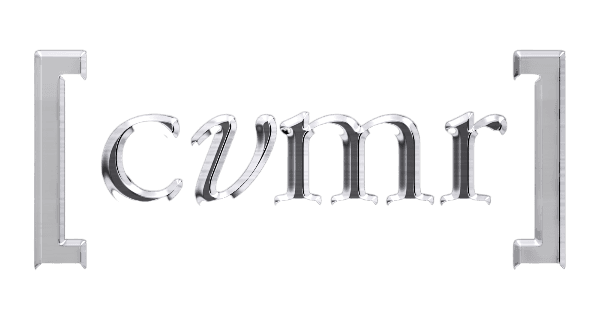Carbonyl Iron vs. Ferrous Iron
Carbonyl Iron vs. Ferrous Iron
Carbonyl Iron Less Toxic and Better Tolerated than Ferrous Iron
Slower to Absorb
With ferrous iron, generally all iron is available for absorption. However, with carbonyl iron, only a small percentage is available for absorption.1,2 The rate at which your body absorbs carbonyl iron depends on the production of gastric acid (which is required to make carbonyl iron soluble), and the balance between the iron being dissolved and absorbed by your intestines. This means that carbonyl iron enters your system much more gradually than other types of iron that can dissolve rapidly.2
Less Toxic than Ferrous Iron
Researchers believe that this slow rate of solubilization minimizes the toxicity of carbonyl iron.1 In fact, studies have shown that carbonyl iron is far less toxic than other forms of iron, even at high doses. Patients taking carbonyl iron can tolerate 10 to 150 times the standard dose of ferrous sulfate iron, while still having nearly the same side effects.1,3
Lower Incidence of Overdose
Lower toxicity can also help prevent iron overdose, a serious concern in households with children. Statistics from the American Association of Poison Control Centers show that when compared with ferrous iron, carbonyl iron is associated with a much lower incidence of accidental overdose or poisoning.4,5 In fact, one study found that between 1985 and 2002, 19 deaths were reported for children who ingested ferrous sulfate, while none were reported for carbonyl iron.5
WARNING: Accidental overdose of iron-containing products is a leading cause of fatal poisoning in children under 6. KEEP THIS PRODUCT OUT OF THE REACH OF CHILDREN. In case of accidental overdose, call a doctor or poison control center immediately.
Ferralet 90 is a prescription iron supplement approved for treating anemias that respond to oral iron therapy. Your doctor may prescribe Ferralet 90 if you have certain anemias associated with pregnancy, blood loss, or metabolic disease, or if you are recovering from surgery or do not have enough iron in your diet.
Important Safety Information
Ferralet 90 has not been tested in children. Dosing for elderly patients should begin at the lower end of the dosing range.
Talk to your doctor before taking Ferralet 90 if you have a known sensitivity to any of its ingredients.
Because some medications may interact with Ferralet 90, you should tell your doctor about any medications you are taking, including antacids and antibiotics.
Before prescribing iron therapy, your doctor will need to determine the type of anemia you have and identify its underlying causes. You should not take this product if you have been diagnosed with hemolytic anemia or an iron overload disorder such as hemochromatosis or hemosiderosis.
If you have certain forms of anemia associated with vitamin B12 deficiency (i.e. pernicious anemia), the Folic acid contained in Ferralet 90 is not enough to treat your condition. Doses of more than 0.1 mg Folic acid per day can hide the symptoms of these anemias, so your doctor must rule them out before prescribing this product.
Once you begin iron therapy with Ferralet 90, take the product 2 hours after meals, and do not exceed the recommended dose.
When taking Ferralet 90, you may experience temporary side effects such as GI irritation, constipation, diarrhea, nausea, vomiting, and dark stools.
Some patients taking Folic acid have reported allergic reactions. Additionally, Ferralet 90 contains FD&C Yellow No. 5 (tartrazine), which may cause allergic reactions (including bronchial asthma) in certain susceptible people. Although uncommon, tartrazine sensitivity is often seen in patients who also have aspirin hypersensitivity. Contact your doctor and discontinue use if you develop any unusual symptoms.
Keep this product out of reach of children. Accidental overdose of iron-containing products is a leading cause of fatal poisoning in children under six. Symptoms of overdose include abdominal pain, metabolic acidosis, decline or absence of urine production, nerve damage, coma, convulsions, death, dehydration, congestion of blood vessels, cirrhosis of the liver, low blood pressure, hypothermia, fatigue, nausea, vomiting, diarrhea, black or tarry stools, vomiting blood, rapid heart rate, high blood sugar, drowsiness, abnormal pale or bluish skin color, lack of energy, seizures, and shock. In case of accidental overdose, call a doctor or poison control center immediately.
- Gordeuk VR, Brittenham GM, McLaren CE, Hughes MA, Keating LJ. Carbonyl iron therapy for iron deficiency anemia. Blood 1986 Mar;67(3):745-752.
- Brittenham GM, Klein HG, Kushner JP, Ajioka RS. Preserving the national blood supply. Hematology Am Soc Hematol Educ Program. 2001:422-32.
- Gordeuk VR, Brittenham GM, Hughes M, Keating LJ, Opplt JJ. High-dose carbonyl iron for iron deficiency anemia: a randomized double-blind trial. Am J Clin Nutr. 1987 Dec;46(6):1029-34.
- Ferronyl iron [Internet]. ISP Corp; 2005 Oct [accessed 2008 Apr 8]. Available at: http://www.ispcorp.com/products/pharma/content/brochure/ferronyl/.
- Manoguerra AS, Erdman AR, Booze LL, Christianson G, Wax PM, Scharman EJ, Woolf AD, Chyka PA, Keyes DC, Olson KR, Caravati EM, Troutman WG. Iron ingestion: an evidence-based consensus guideline for out-of-hospital management. Clin Toxicol (Phila). 2005;43(6):553-70.
Source from Ferralet 90
Read also




